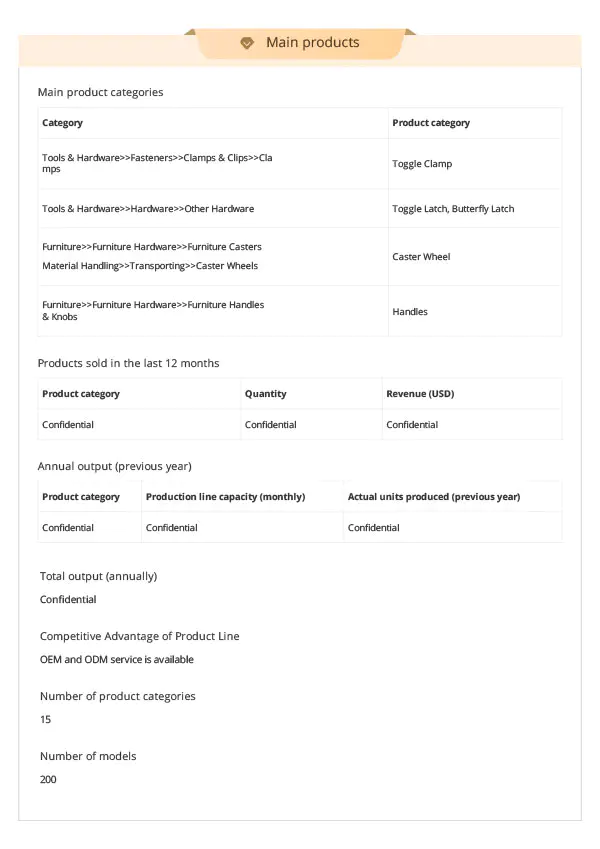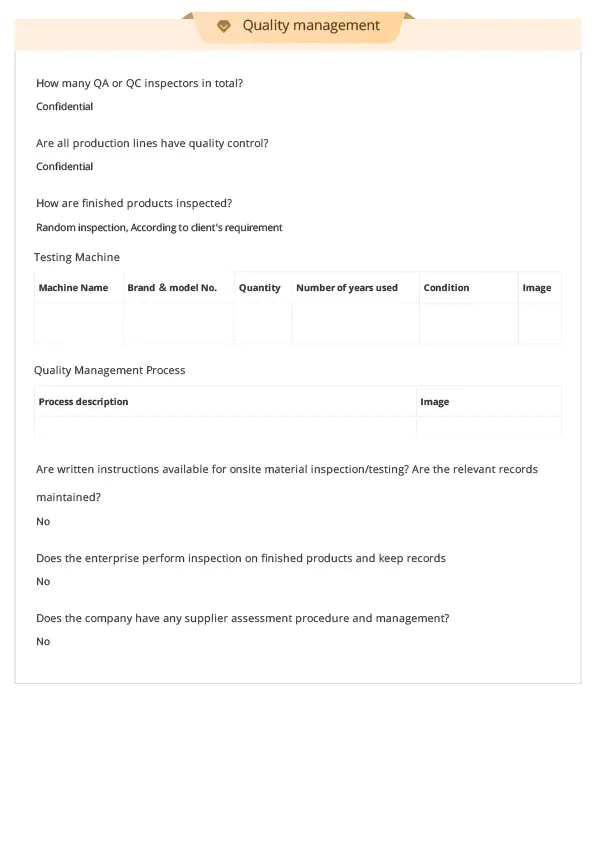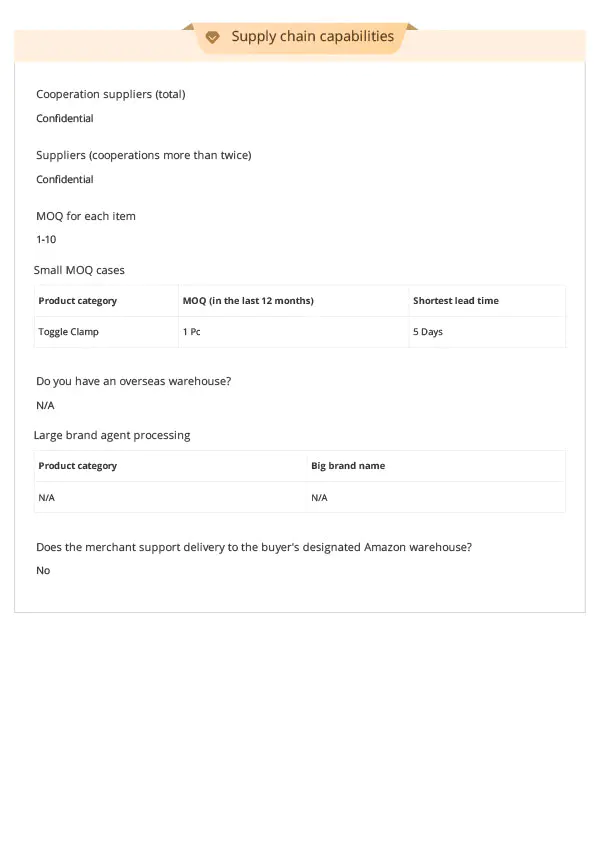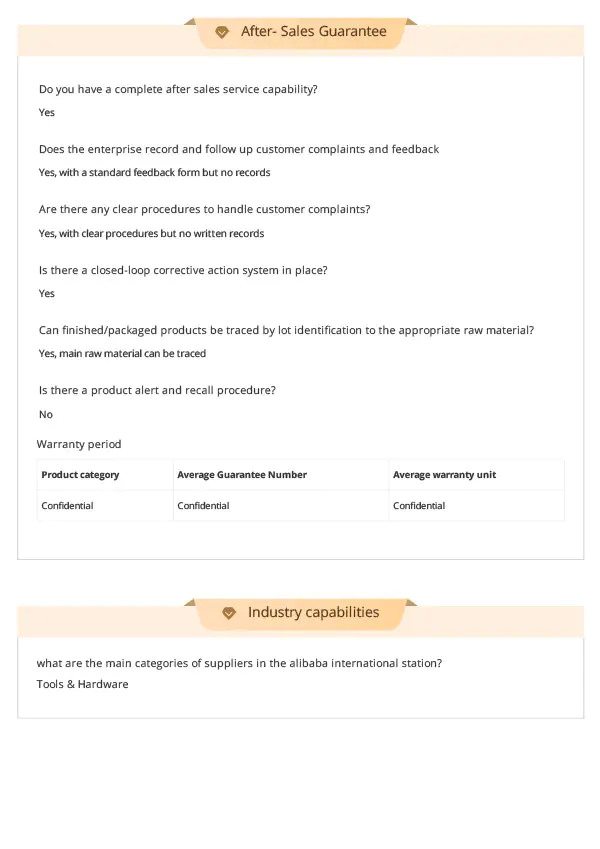
-
2010
Founded In 2010
-
15,000m²
15000m ² Advanced Factory Building
-
2,800,000
Annual Shipment Volume Of 2800000 Packages
-
43+
43 Factory Employees
If you would like to learn more about our products, please feel free to contact us and we will do our to assist you.
-
1. Material composition: A variety of steels give diverse performances The main material of Steel J...
READ MORE -
Assembly process of rivet quick lock puller The assembly of Rivet Quick Latch Buckle Puller Latch...
READ MORE -
1. Strictly follow the assembly criteria of design requirements The assembly of the horizontal togg...
READ MORE -
Sturdy engineering plastic lightweight arm: the perfect combination of strength and lightness The...
READ MORE -
As a common carbon structural steel, A3 steel has certain advantages in strength, plasticity and we...
READ MORE
How Are Hardware Stamping Molds Versatile in the Automotive and Aerospace Industries?
Hardware stamping molds play a critical role in modern manufacturing, particularly in the automotive and aerospace industries. These molds enable the efficient and precise production of metal parts, ensuring high quality and consistency across large volumes. The versatility and precision of stamping molds make them indispensable in these two sectors, each with its unique demands and applications.
Automotive Industry
In the automotive industry, stamping molds are fundamental to the production of a wide variety of components. The industry relies on the high precision and consistency offered by these molds to meet stringent safety and performance standards. Key applications include:
Body Panels
Doors, Hoods, Fenders, and Trunk Lids: Stamping molds are used to manufacture these parts, ensuring uniformity and durability. The precision of stamping molds guarantees that each panel fits perfectly with the rest of the vehicle, contributing to its overall structural integrity and aesthetic appeal.
Structural Components
Chassis Parts, Brackets, and Engine Mounts: These critical components require high strength and precise dimensions. Stamping molds ensure that these parts can withstand the stresses and strains of daily vehicle operation, providing safety and longevity.
Interior Parts
Seat Frames, Dashboard Components, and Trim Pieces: These components need to be both functional and visually appealing. Stamping molds allow for the creation of intricate designs and smooth finishes, enhancing the comfort and look of a vehicle’s interior.
The use of stamping molds in the automotive industry enables high-volume production while maintaining the quality and reliability of each part. This efficiency is crucial for meeting the demands of the global automotive market.
Aerospace Industry
The aerospace industry demands components that are both lightweight and exceptionally strong, qualities that are achievable through precise metal stamping. Stamping molds are used to produce a variety of critical aerospace parts:
Aircraft Skin Panels
Aluminum or Titanium Panels: These panels form the exterior of aircraft and must be lightweight yet strong enough to withstand the pressures of flight. Stamping molds ensure that these panels are manufactured to exact specifications, providing the necessary aerodynamic properties and structural integrity.
Structural Elements
Ribs, Spars, and Frames: These internal components provide the necessary support and shape for aircraft structures. Precision is key, as any deviation can affect the performance and safety of the aircraft. Stamping molds ensure that these parts are produced with the required accuracy and consistency.
Engine Components
Fan Blades, Housings, and Brackets: These components must endure extreme conditions, including high temperatures and pressures. Stamping molds produce these parts with the necessary precision to ensure reliable performance and longevity in the demanding environment of an aircraft engine.
The high precision and repeatability of stamping molds ensure that aerospace parts meet rigorous standards for performance and safety. The ability to produce complex geometries and fine details is essential for the intricate designs required in modern aircraft.

 English
English Español
Español русский
русский







